18 Facts About The Recording Of Children Of Bodom’s Hate Crew Deathroll Album
January 6th 2021 marks 18 years since the release of Children Of Bodom‘s acclaimed Hate Crew Deathroll album. I’m writing this introduction with a heavy heart as just a few days ago Alexi Laiho, the guitar playing lead vocalist of the group, had passed away. I was blessed to produce and record three Bodom albums and in general Alexi and I did around 30 studio sessions together. Along with that we did numerous live shows as between 1998 and 2002 I toured with Children Of Bodom as their front-of-house sound engineer. Despite the sorrow, I wish to celebrate adulthood by telling you 18 facts about the recording of Children Of Bodom’s Hate Crew Deathroll album.
You should read this post if you like the Hate Crew Deathroll album by Children Of Bodom and would like to hear memories straight from the source about the recording session.
Read also these Children Of Bodom related posts:
- 5 Things You Didn’t Know About Children Of Bodom’s Something Wild Album
- 5 Interesting Facts That You Haven’t Heard Before About Children Of Bodom’s Hatebreeder Album
18 Facts About The Recording Of Children Of Bodom’s Hate Crew Deathroll Album
A band called IneartheD that would later be known as Children Of Bodom had done their 2nd and 3rd demo with me. Since then they’d changed their name to the more familiar one and signed to Spinefarm Records. After two albums, several singles and cover versions I recommended that they’d go check some other studios too. Yet, after the awesome Follow The Reaper album they wanted to return to work with me on their next full-length release. So let’s get started, shall we.
1. The live energy of Hate Crew Deathroll
After mixing four years of Children Of Bodom live shows I knew exactly how energetic they could be when the circumstances were just right. That monstrous live energy was something I wanted to capture and deliver to the listeners on Hate Crew Deathroll. On the previous releases we’d mainly concentrated on getting things right when it comes to technicality. Yet, now was the time to take everything to the next level. That included things like energy, the feeling of danger and all those other cool things that I had witnessed when mixing them live.
It’s pretty easy just to play things right, and then again much more challenging to play with enormous energy. I feel that on Hate Crew Deathroll we managed to capture something unique and one-of-a-kind. Naturally the compositions are the foundation of it all along with the virtuosity of each of the members.
The energy that the album radiates is best described like this:
Imagine a wildly surging rollercoaster where the cart is not attached to the rails. On every curve it leans on two wheels and is about to be derailed, yet miraculously manages to stay on the tracks. I personally love when in music it’s like balancing on the edge and still the band somehow manages to avoid falling down and survives to the end of the song with flying colors.
There were moments when Alexi was playing a song or even a part for several hours. That’s when he’d usually get angry enough, and now there was this huge burst of energy in his playing and this was exactly what I’d been waiting for. This rage is constantly present on Hate Crew Deathroll and you have no way to avoid sensing it.
2. The album that inspired us while recording Hate Crew Deathroll
On a daily basis we got a huge inspiration from listening to Andrew W.K. high-octane I Get Wet -album and especially the enchanting track Party Hard. Not a day went by without it being blasted from the speakers of Alexi’s Pontiac in the backyard of Astia-studio.
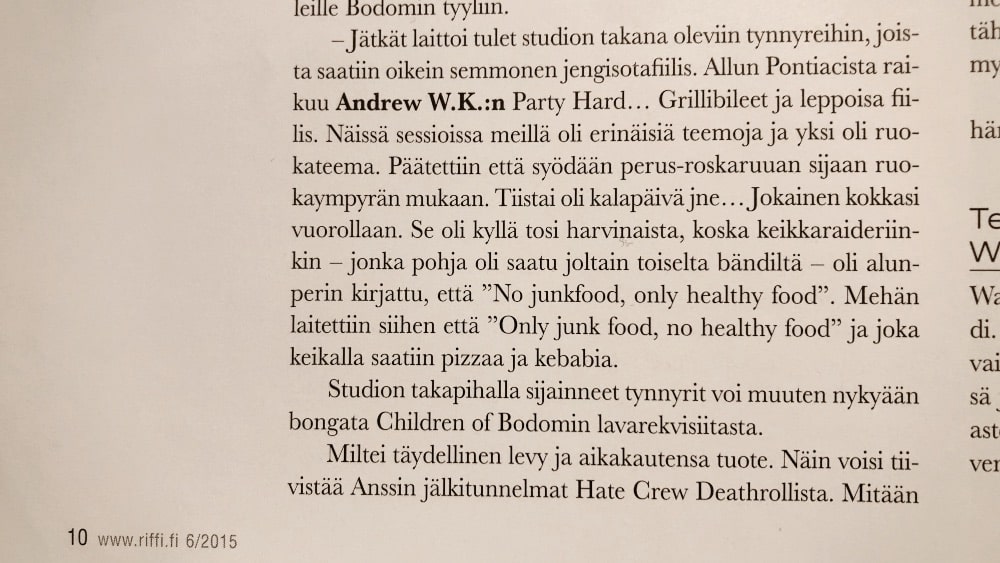
3. Hate Crew Deathroll and a healthy diet
I recall how years earlier when COB signed to a new management we received the basic raider aka set of requests and demands for the concert organizer. On the meal section the stock text said: “No junk food like *the list of the most common fast food restaurants*. We only accept healthy food”. The rebelling punk rockers as we were, we immediately changed it to: “Only junk food like *the list of the most common fast food restaurants*. We do not accept any healthy food”.
For once we decided to take a bit better care of ourselves and one of the themes of the Hate Crew Deathroll session was healthy habits. We had a weekly menu according to nutrition guides and even ventured onto eating vegetables. Junk food was limited to only once a week.
4. Guitar amp and cabinet
Along with the gear from Alexi Laiho and Alexander Kuoppala we used the Astia-studio’s EVH 5150 tube amp to a Marshall 4 x 10″ cabinet for some of the rhythm guitar doubling parts.
5. “Lyric Writer hard at work. Do not disturb!”
Alexi finalized the lyrics for the songs during the recording session. One day at Tav-Astia aka Astia-studio’s lounge that has a small stage there appeared to be a small hut made of cardboard boxes. It had a small piece of paper that was attached using gaffer tape. The sign said: “Lyric Writer hard at work. Do not disturb!”
6. Signing the record contract
At the beginning of the Hate Crew Deathroll album recording Children Of Bodom had no recording contract. During the first weeks the matter was taken care of and they signed a contract with Spinefarm Records at Astia-studio.
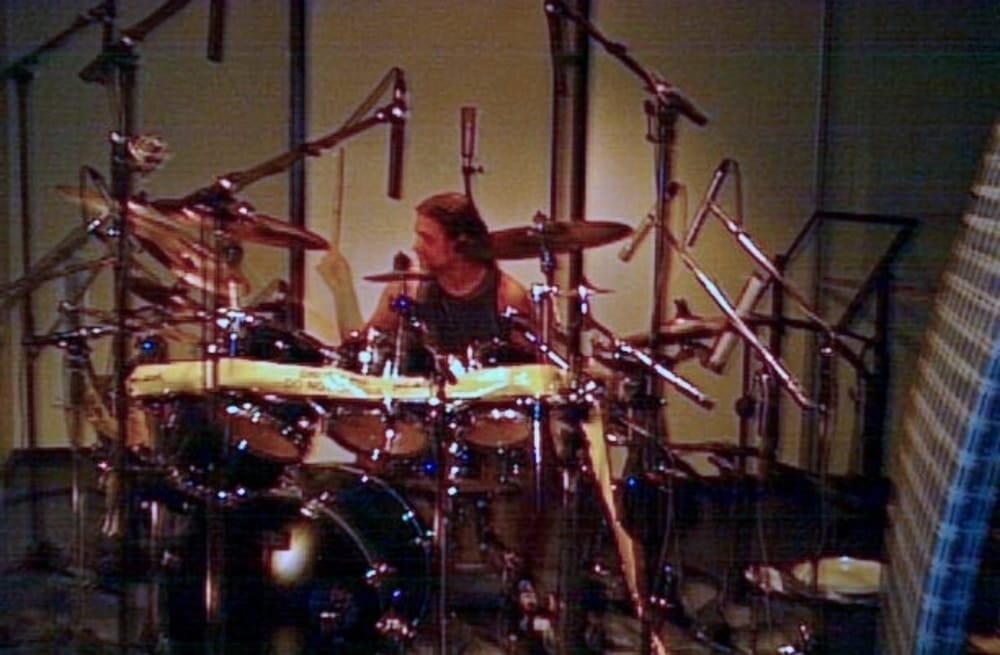
7. The drum intro to Bodom Beach Terror
Originally this song started with all instruments. As the producer I suggested a slightly different approach. The idea was to give the start more original flavor – something that they could use live as a longer drum intro. I loved the fact that this would be a bit like Painkiller but in the Bodom style.
8. Sponsorship
The guitarist Alexander Kuoppala had after a few funny incidents managed to get a sponsorship to the session. It was a memorable moment when a beer company truck arrived at Astia-studio and they carried in a huge pile of beer packs along with 120 cans of energy drinks. The driver laughed and told us to call him if we needed more. After a week we called and asked for more as we’d already run out. Despite the promise, they never replied to our request.
9. The wild solo touch of Alexi “Wildchild” Laiho
On Hate Crew Deathroll Alexi’s solos were even more wild than before. When recording Janne Wirman‘s keyboard leads we bumped into a strange problem. During the recording I had to tweak the fine-tuning from the sound module on certain parts to make it match Alexi’s fierce guitar leads. Without the tweaking on the fly some notes would have sounded way too detuned.
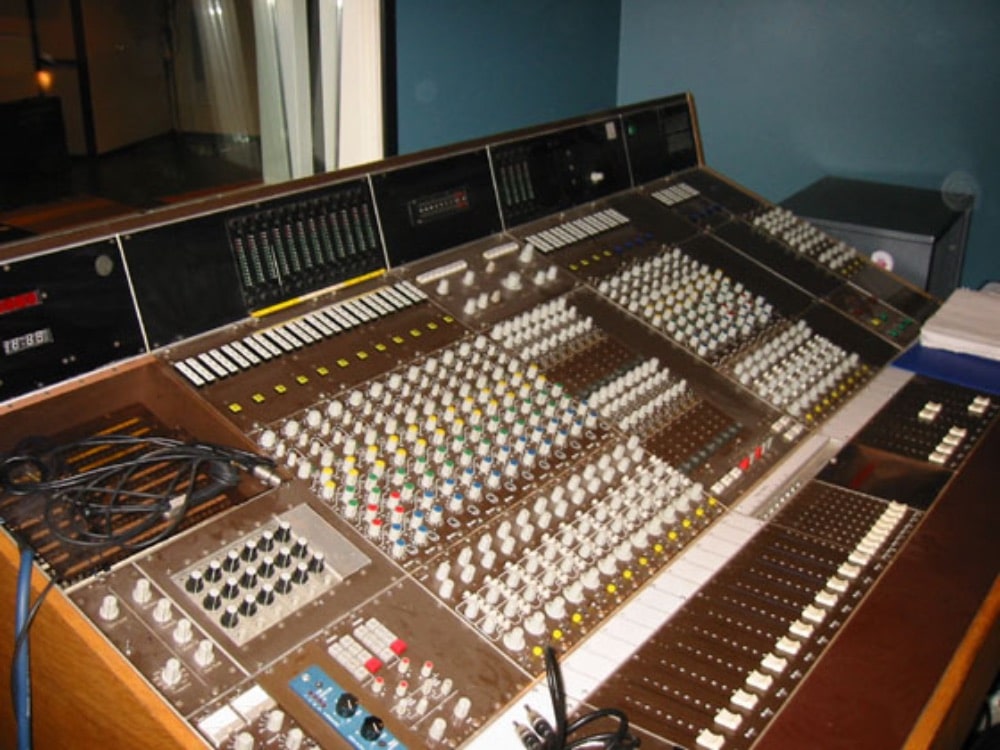
10. The legendary recording console used on the session
Around the early 2000’s at Astia-studio A we used the legendary Finnish Love Records label & recording studio’s original Helios mixing console made in 1977. Many of the Finnish classic albums including Children Of Bodom’s Hate Crew Deathroll were recorded on this desk.
11. The recording media
This was the first Bodom album that used the computer as the recording medium. Yet, instead of editing we kept on recording until each part was perfect. Many fall for recording in small parts, but we chose the different route. Instead of the one bar splices we ended up using long takes and this is part of the magic the album has.
12. Picks all over
On some sessions there are things that take off and on the Hate Crew Deathroll it was guitar picks. At some point the guitar duo Kuoppala-Laiho started literally planting their picks all over the place. I even found a handful on the pizza I’d ordered on the junk food day. The funny part is that no-one got near the pizza box, yet my late lunch was all covered with pepperoni, cheese and Jazz3 picks. In addition, a few times at night after the recording ended and as I opened my apartment door, from between the frame and the door a pile of picks fell down. The AA club as we used to call Alexander and Alexi were both one goofy bunch of guys.
13. The more melodic keyboard solos
On Hate Crew Deathroll we approached many things from a different angle. One of them was the melodic elements on the solos. A great example is the keyboard solo at the end of Lil’ Bloodred Ridin’ Hood where me and Janne Wirman worked together on both the melody line and rhythmic hooks. The more notes we cut out, the stronger the melody became.
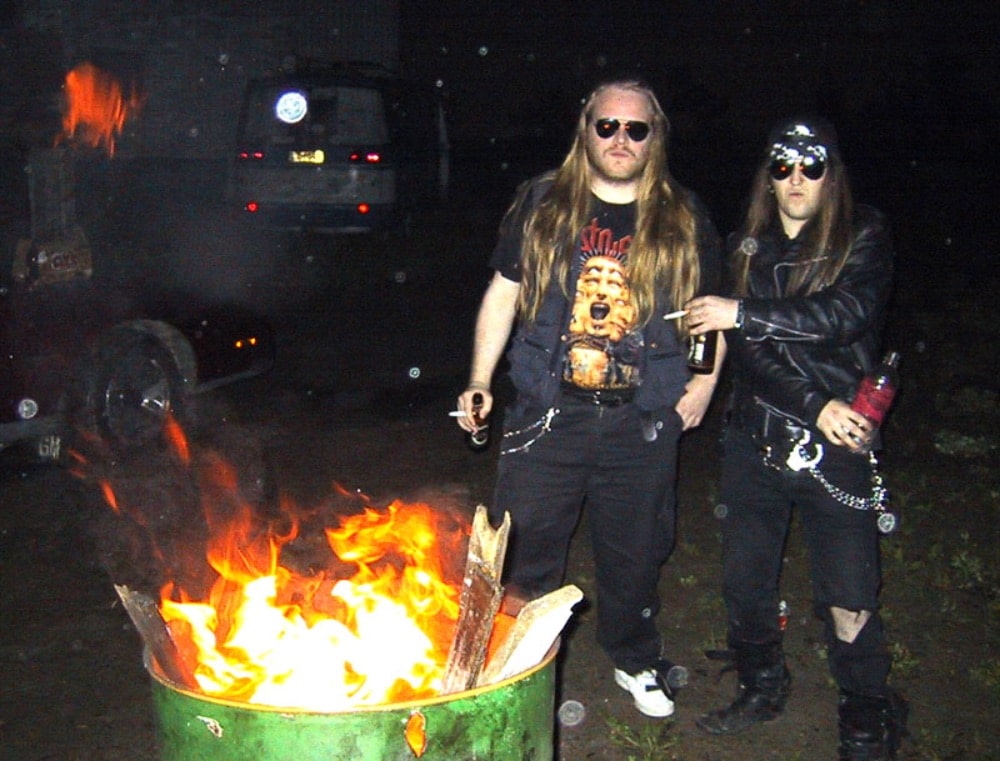
14. Hate Crew Deathroll and gang war at Astia-studio
At the studio backyard every night while listening to Andrew W.K. we filled some barrels with wood and lit them on fire. Or actually the band members did, but anyway. We called it the gang war. You may remember Children Of Bodom live shows where they had several barrels with flames coming out of them. The Bodom guys brought the gang war from the Hate Crew Deathroll recording session to their live set.
15. The distorted vocals of Needled 24/7
The song Needled 24/7 has parts with distorted vocals. We created the effect during recording by overdriving the microphone gain and lowering the volume fader on the Helios mixing console.
16. From festival to the studio
Just before the recording of the Hate Crew Deathroll album started we performed at Wacken Open Air festival in Germany. The Children Of Bodom set was on Friday evening at 9:30 pm right after Bruce Dickinson at the left main stage. We’d done a huge amount of live shows and the band had never played this great. The show at Wacken was one of the coolest I’d ever mixed and it will stay with me forever. Then again, there was a strange twist when half-way through the set some dude appeared next to me observing tightly my every move. We might hear more about him a bit later.
17. The lead vocal recording of Hate Crew Deathroll
To our disappointment Alexi lost his voice just as the vocal recording started and needed to take some time off for him to recover. I’m pretty sure we tracked all lead vocals in a few takes for the whole album during one night. Yes, back then we loved recording at night as that’s when no-one was bothering and that was natural for us; the nocturnal creatures of the night.
I recall how at the break of dawn when still recording the tiredness started to get the better of me. I started suffering from visions of gigantic rodents scurrying around the control room floor. It’s no fun when recording and at the same time trying to avoid getting bitten… Luckily we survived that ordeal too and managed to complete the vocal recording intact.
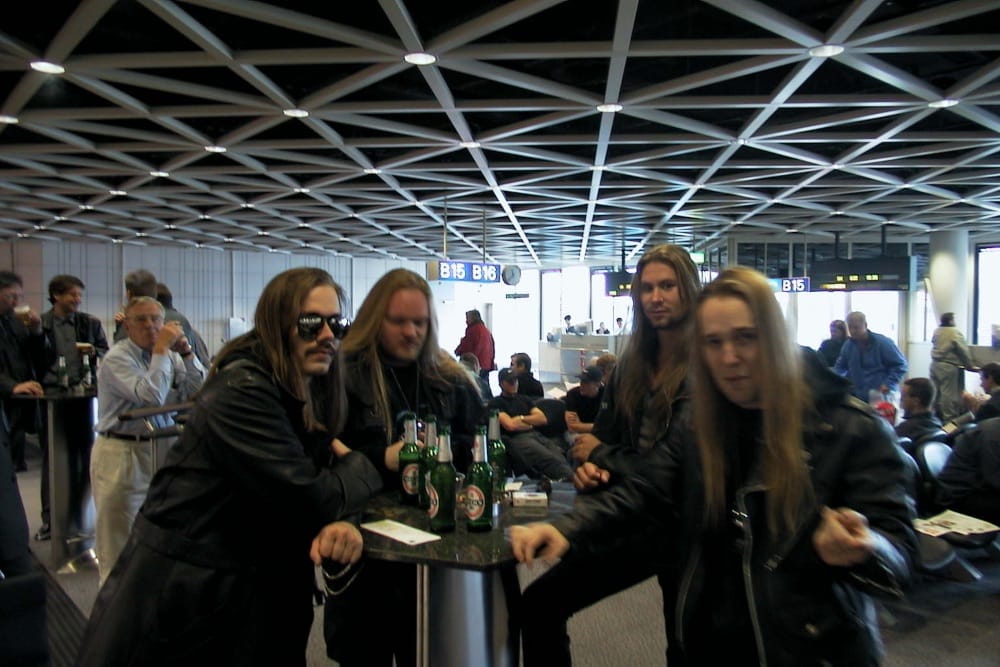
18. FOH sound engineer retires
During the recording of the Hate Crew Deathroll album I received an email from the keyboard-wizard Janne Wirman. It said that at Wacken the dude that appeared at the mixing booth was the owner of the festival’s sound system. He’d messaged the Bodom management and they’d forwarded the message to Janne. The owner was there to see who was this moustached drunken Finnish hippie that had tweaked the best sound of the festival. After hearing this I expressed my gratitude to Children Of Bodom for the awesome opportunity of touring for four years as their front-of-house sound engineer. Once I had done all the shows that were already booked I’d retire. What would have been a more suitable moment to say thank you very many and goodbye.
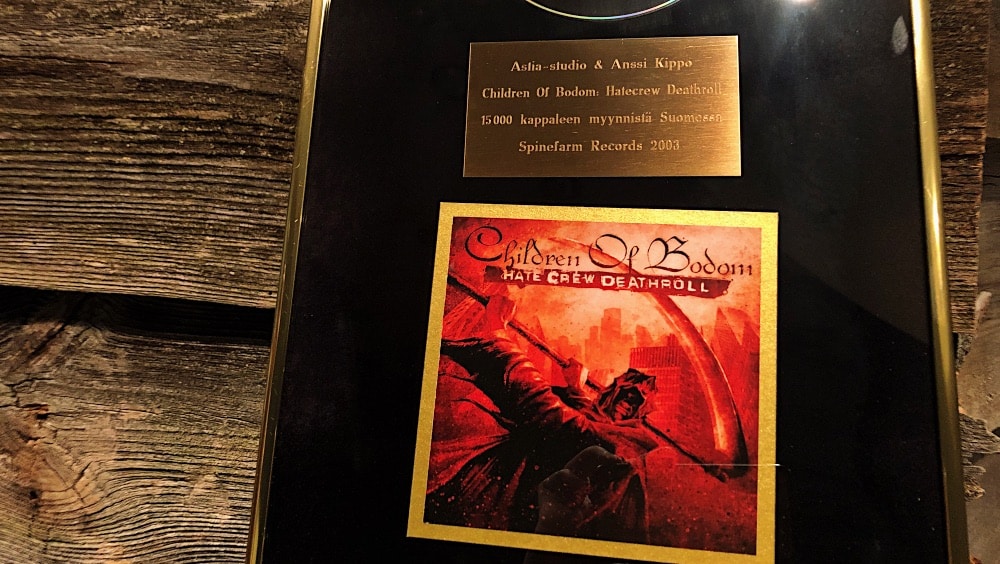
Children Of Bodom: Hate Crew Deathroll
A sincere thanks to you too for reading these 18 facts about the recording of Hate Crew Deathroll. I am forever grateful to Alexi Laiho, Alexander Kuoppala, Henkka Blacksmith, Janne Wirman and Jaska Raatikainen for the opportunity to participate in the making of this breath-taking album along with the first steps of the Children Of Bodom’s career.
Even though Alexi Laiho left a huge musical legacy, I need to remind how important each member was in the success story we all know as Children Of Bodom. Happy birthday for the coming of age on January 6th 2021 Hate Crew Deathroll album!
We’re the Hate Crew, we stand and we won’t fall!
If you like this blog post please share it on social media. This way you will help other Bodom fans to enjoy these bits and pieces about the making of their debut album.
Would you like to see more rare photos from the early days of Children Of Bodom? Follow Astia-studio on Instagram by clicking here and check our throwback posts. Thank you very much and all the very best!
Read more session experiences at Astia-studio from these blog posts:
- 5 Things You Didn’t Know About Children Of Bodom’s Something Wild Album
- 5 Interesting Facts That You Haven’t Heard Before About Children Of Bodom’s Hatebreeder Album
- How Ensiferum Ended Up Recording Two Paths Album On Tape pt. 1
- “This Was Supposed To Be The Last Session For Us”
– Case Study Monotonia - “In Two Months We Learnt More Than During The Past 5-10 Years”
– Case Study Serpico - “From Now On This Is The Only Way Erävesi Will Make Recordings”
– Case Study Erävesi - Jarmo Nikku: “The Sound Felt Natural (After Quite Some Time)”
– Case Study Seniors Clearwater Revival
Astia-studio is a full analog recording studio located in eastern Finland with over 25 years of experience. Bands and artists from all over the world including USA and the furthest corner of Russia, Vladivostok have arrived to us for tape recording sessions.
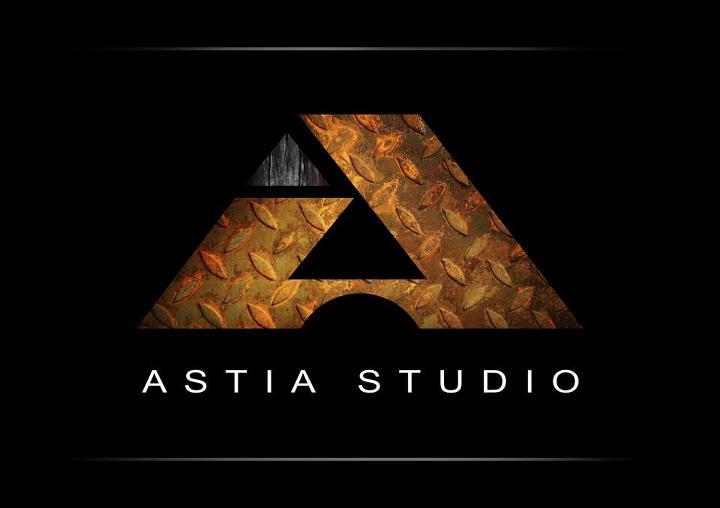
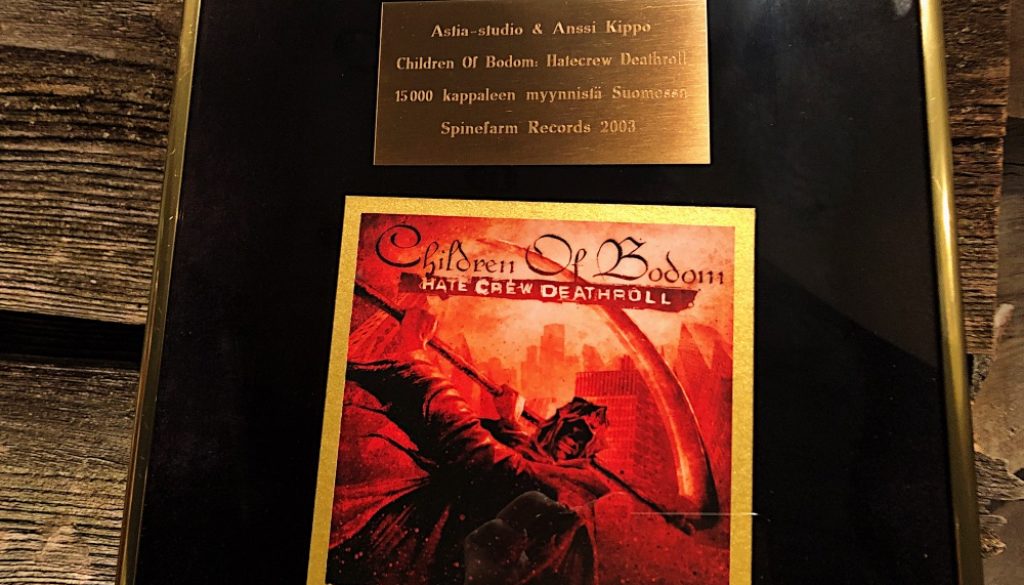
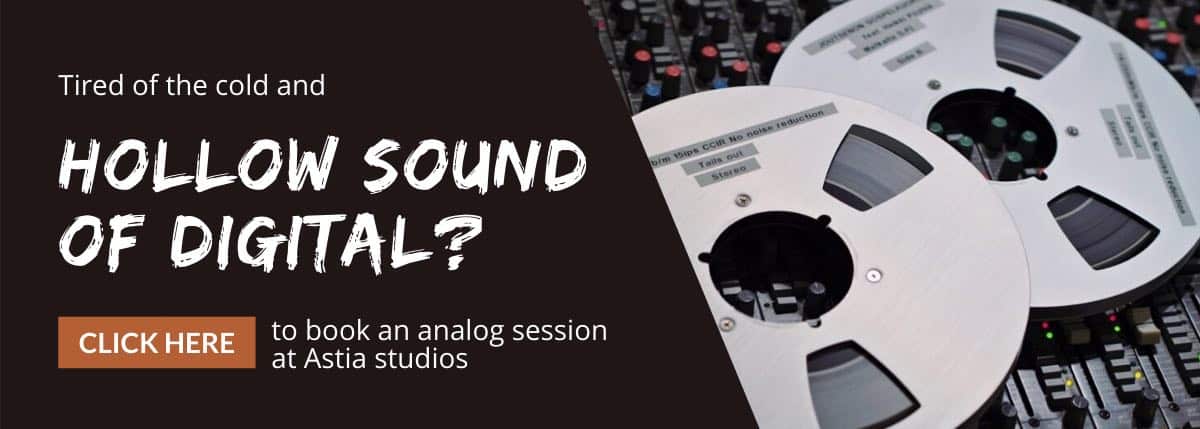

06/01/2022 @ 4:36 pm
Holy Shit Anssi!, that was awesome!
thanks SO much for sharing, i could listen to ENDLESS stories about the first 4 Bodom albums – they’re pretty much mini Bibles to me.
Thank you for your service!
\m/
10/01/2022 @ 12:07 am
Thank you very much Steve. ??
06/01/2022 @ 8:23 pm
Such a great story!!! And so fun sometimes))))) Thank you very much!!! \m/
10/01/2022 @ 12:08 am
Thank you very much Helgi. ??
10/02/2023 @ 9:51 am
I’ve been reading more than half your blog overnight, this is an absolute gold mine of informations and it’s been an absolute honor to read things a legendary name like Anssi Kippo wrote by hand.
I would be really interested in knowing more about studio guitars used by CoB (and your suggestions about studio guitars as well), as I have a question in particular I always had in my mind (if you replied to this in some posts already, my bad for having missed it).
What about tremolo bridges vs hardtail bridges during recording sessions (especially for what concerns rhythm parts)?
Was Alexi recording his rhythm guitar parts on his usual Floyd Rose guitars? Now of couse we know he was an absolutely extra-ordinary guitar player so normal rules didn’t apply to him, but to a “normal” person wouldn’t you suggest against a floating bridge to record, especially to avoid tuning issues? And what would be the best bridge (and the best guitar, actually) for recording with max stability / tuning accuracy? Thanks in advance if you ever take in consideration replying to me. Keep the awesome work
10/02/2023 @ 9:36 pm
Hi Fred and thank you very much for the heart-warming words. 🙏 I’m happy to hear you’ve found my writings useful.
If my memory serves me right with Alexi we recorded everything using a guitar with Floyd Rose – also the rhythm parts. The early demos he most likely had his Ibanez RG550. It was so cool to notice that we both had similar RG550s. After that it might have been Jackson custom shop guitars.
Back then we noticed that some guitars would work better than others when it came to recording rhythm guitars. Adjustments need to be just right along with how you tune the instrument. As explained on my post about tuning, when you hit the string hard you need to tune it the same way.
Cannot recall the name of his guitars – yeah, they were characters rather than “just instruments” – but some kept the tuning better than others. I’d prefer 80’s Jackson custom shop over anything manufactured today. Yet, there are many good individual instruments from most manufacturers.
Back in the day I was highly interested about which bridge and pickups were installed. Nowadays I no longer bother as I’ve learned that an instrument can work great for one but doesn’t work at all for another. So I’m very sorry to reply with the oldest of clichés: it always depends on many factors. When recording I let the guitar player do his/her thing. If something isn’t right sound or tuning-wise, then we’ll find the solution together. Too thin strings, unstable playing position (leaning forward/back), dirt underneath the strings are just a few factors that can cause severe tuning issues.
I hope my reply isn’t too boring.
Have a great weekend & all the very best! ⭐️
12/02/2023 @ 7:47 pm
“Boring”? That was incredibly useful and informative, and I feel extremely honored for having received a reply from you!
It was also so fascinating to know Alexi recorded also rhythms with a floyd rose (I found it a really challenging bridge to use while recording).
And that’s not a cliché, of course I guess since much of the factor is how strong every person hits the strings (and how strong he/she presses on strings with the left hand) that’s extremely personal and some guitars that can work wonderfully for someone can be dreadful for someone else.
May I ask you if you happened to have some recording experience with an Evertune bridge?
13/02/2023 @ 12:25 pm
Thank you very much. 😊 At some point I did prefer a non-floating bridge when recording rhythm guitars, but that was post-Bodom. Yet, the guitars were new and the quality wasn’t as good as with Jackson custom shop models.
I think some guitarists like Ensiferum’s Markus and Petri have used Evertune bridge guitars at Astia-studio. I do recall that they kept the tuning a lot better compared guitars that didn’t have Evertune. When recording Petri’s rhythm tracks, we’d clean the string in the morning and no tuning was needed as it was ready to go. 👍
Have a great week & all the very best! ⭐️
07/01/2024 @ 5:57 pm
Hello from Switzerland and thank you so much for all the fascinating informations!
07/01/2024 @ 6:46 pm
Hi and thank you very much for the comment. Hope to release more interesting info this year as well.
Have a great week & all the very best! ⭐️